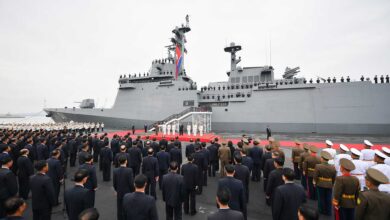On January 13, 1975 Kim Jong Il visited a firing range to test the performance of new sniper rifles.
He reached the platform and ordered that instead of the fixed target, ten light bulbs be hung on a branch of the pine tree beside it.
The tree was 100m away from the platform, a distance in which the caps of the bulbs could be dimly seen, much less the glass tubes.
The shots rang out, shattering all the bulbs one after another.
“Good, this rifle is passed,” the General said to the officials.
Then he had penicillin bottles fetched. The bottles were put on a shelf 50m away from the platform, but he ordered them to be put 100m away. They were much smaller than the light bulbs. They were hardly visible, even with the help of the rifle’s special sights.
He began firing again. The shots rattled through the clear air. Through binoculars the officials saw the ten tiny bottles vanishing in a minute.
Next, ten pop bottles were put on the shelf and, even after the firing of the last tenth bullet, they all remained upright on it.
The officials hurried quickly towards it, only to see the ten bottles without their tops.
“Our workers are laudable, indeed. They have great skills.”
The General praised the manufacturers, the officials looking admiringly at the outstanding marksman.

